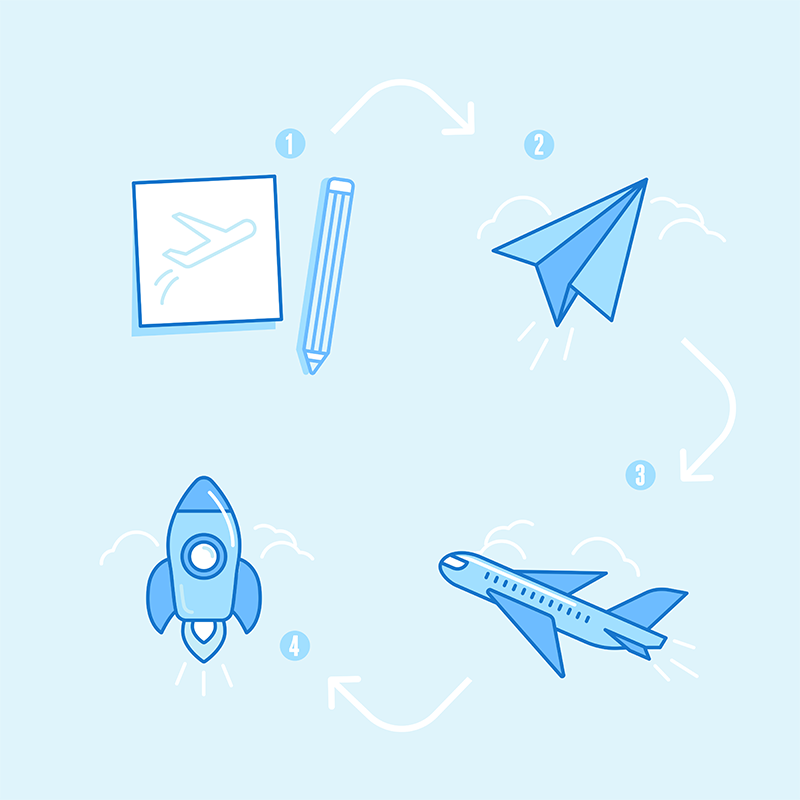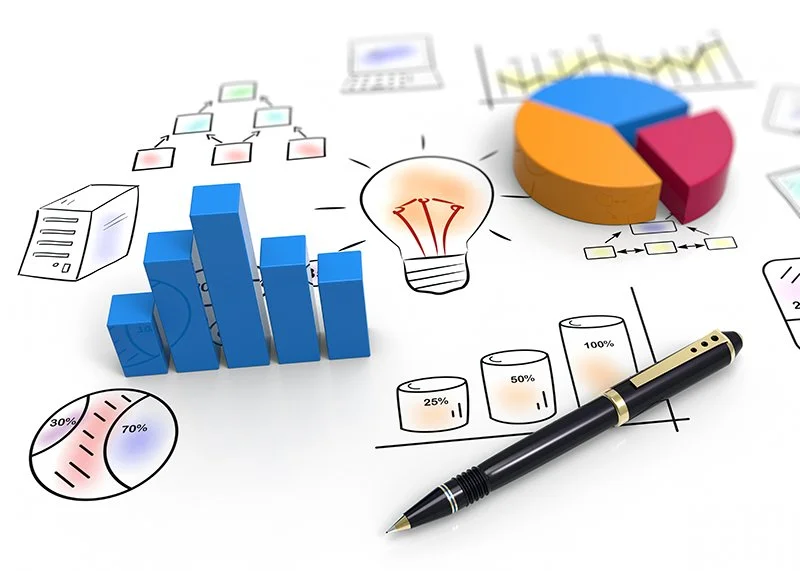Our Insights
Stay in the Know with our UX Perspectives
UX Hire or Contact Design Team?
Meet the faces of KRUTSCH in this ‘Vlog’ take on a previous blog post on why we here at KRUTSCH believe UX design is a team sport!
Why Your App is Really Three Apps
We’ve made quite a few apps that work in lots of different ways.
When a client comes to us with an idea for app, the conversation eventually turns to: it's not 'an' app, it's three apps. The client usually assumes we mean iPhone and iPad, Android, and web-based for desktops.
How to Design a Dashboard: 4 Key Principles
Too often designers insert pretty graphs that show information that isn’t actually critical to the user. A dashboard’s goal is simple: help users evaluate and perform the most important tasks. How to design dashboards that become an effective, reliable resource for users.
UX Design Life-Cycle, Part 7: Deliver & Test the Design
Every product launch surprises us a little. It’s not that testing uncovers issues in need of repair, polish, or even re-design; that’s a given for any but the most trivial of apps. No, it’s simple, passé elements, that we exercise over-and-over internally, that somehow trip-up our end-users and leave us shaking our collective heads. Here are some entertaining examples.
iOS vs. Android App UI Design
We’ve made quite a few apps that work in lots of different ways. How do we design for iOS versus Android? We focus on accommodating platform differences while maintaining a cohesive feel and experience.
MDC 2020: Watch, Listen, Learn – How to Run a (Remote) User Study
A good UX design process breaks down big challenges by infusing fresh perspective with proven tools and techniques. However, none of these tools or techniques are more insightful or guiding than a user study. User studies recalibrate focus by uncovering key customer feedback and perceptions. They are the biggest driver of product innovation to create a competitive advantage.
The Difference Between a Web, Hybrid, or Native App
Understand the differences between a Web app, Native app, and Hybrid app, and use our framework for determining the right model for you and your project.
UX Design Life-Cycle, Part 6: Prototype Main/Secondary Scenarios
Know how spaghetti always seems to taste better on the second day? The reason is simple: the pasta absorbs a lot of the moisture and some of the sauce. When you re-heat it, it retains the flavor without being as "wet" as the day before. Prototyping is one of the most powerful steps in the design process. It melds together your research, flow, and visuals, giving a soul to your idea. We will discuss two methods we use for prototyping, highlighting the strengths and weaknesses of each approach.
UX Design Life-Cycle, Part 5: Establish a Visual Language
Developing a visual language affects more than the aesthetics of a project. It influences usability, comprehension, and emotional responses. It’s a powerful tool for communicating with users, building trust, and creating interest.
UX Design Life-Cycle, Part 4: Choose Design Patterns and Sketch Out a Story
Don't start from scratch. Trust proven, reusable design patterns. More than visual templates, design patterns are tested human interaction models. They slash the time required to assemble early versions of your digital story.
UX Design Life-Cycle, Part 3: Define the Feature Set and Workflow
In our experience, a major hindrance to product usability is the wrong feature set and workflow.
Ever use the fish scaler on a Swiss Army knife? Neither have we and we will show you how to keep unnecessary features from cluttering your customer’s experience.
UX Design Life-Cycle, Part 2: Watch, Listen and Learn
There is no user experience without the user. Make customers the first place you start in designing your app or service. User studies work to uncover customer perceptions, wants and needs. When done well, they set a course for design strategy that drives innovation and creates a competitive advantage.
UX Design Life-Cycle, Part 1: Understand the Problem
Great design solves a problem for someone. Make sure you understand the problem you are going to solve. More importantly, make sure all of the stakeholders are aligned on the same problem.
You are spending a lot of someone else’s time and money. Make sure you are giving the client what they want. Seems like common sense, but...mistakes made here are catastrophic.
UX Design Life-Cycle, A Mini-Series
Clients ask: “...tell us about your process or design principles.” I am going to do something far more valuable: I am going to write about what has worked and what has not worked. In the weeks ahead, I will post a series of bite-sized articles that encapsulate the life-cycle of product design and user experience (UX), across a variety of industries, with clients both large and small, with consumer and commercial projects.
Should I Hire an In-House Designer or a UX Agency?
Creating a great user experience takes a combination of leadership, customer insight, workflow analysis, visual design, and precise front-end coding, followed-up with careful user observation. It takes an experienced team that tips the scales in favor of skill-sets over dedicated employment.
Remote UX Design: 5 Guidelines
Should a client be willing to use a remote, specialized design team, there are guidelines to making this work. Guidelines that work for the client and the design team, whether you are working both on-site and remote, or exclusively remote.
The Importance Of The Retrospective: 3 Tips
Our Design Firm has grown by adding a new Design Associate to the ranks, as well as winning new clients. All things which sound good ... on the surface.
6 Design Tools Every UX Designer Needs
Every UX designer needs design tools to keep their work efficient and easy to manage. Read to understand the 6 design tools every UX designer needs.
The Eureka Moment in UX Design
If I look back at the customer research and user studies I’ve performed over the last 15 years, every one shares a common trait: we learned something significant that neither I nor my client understood about the customer.
User Observation in UX Research: Field Observation
Tools like mixpanel or SurveyMonkey provide insight into what end-users are doing within your app or service. These tools may even help gauge overall customer satisfaction, but that’s the not the critical part of the story. A well-executed user study will drive impactful user experience design (UXD), leading to beautiful things that engage your customers and create competitive advantage.





















